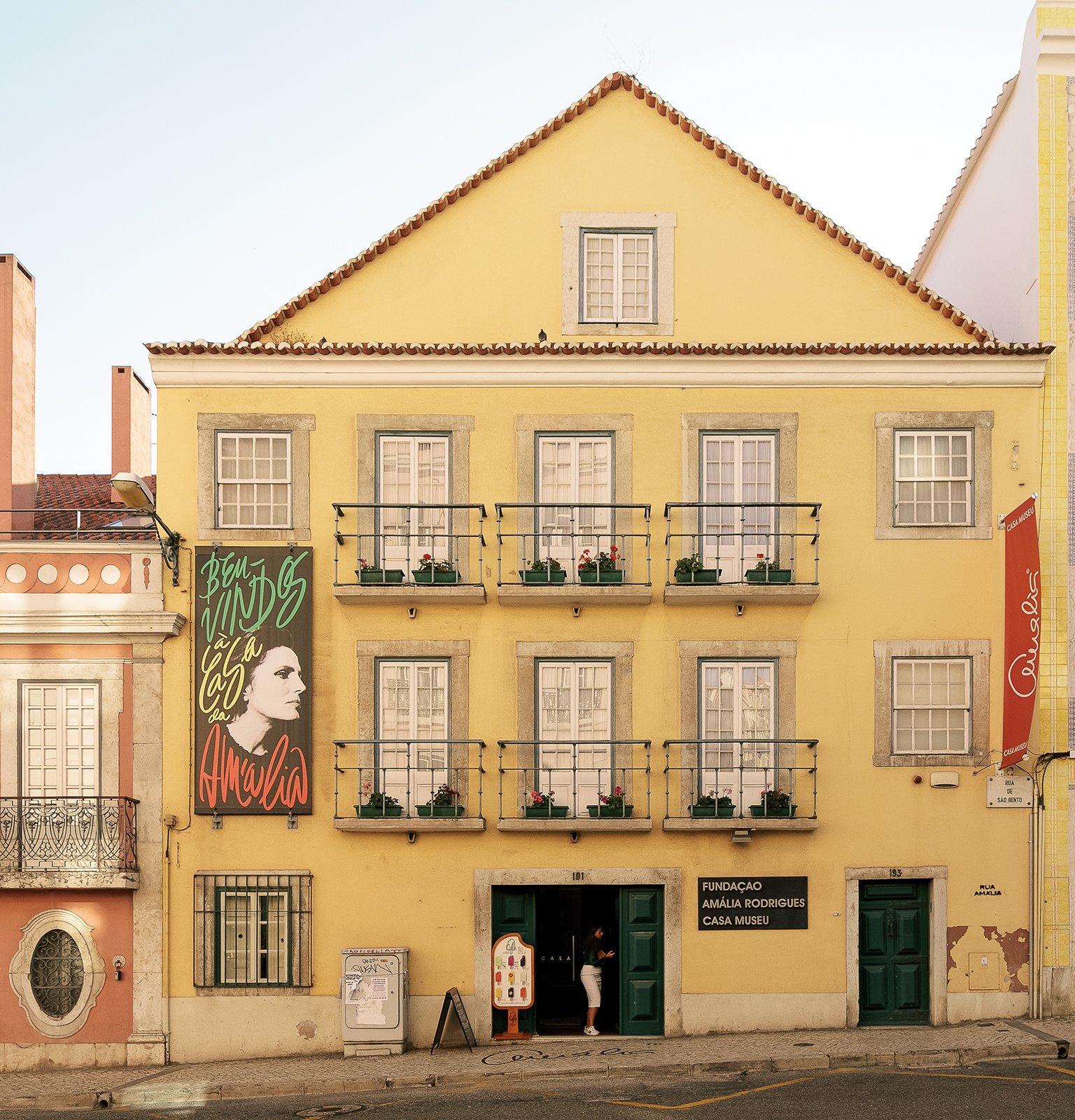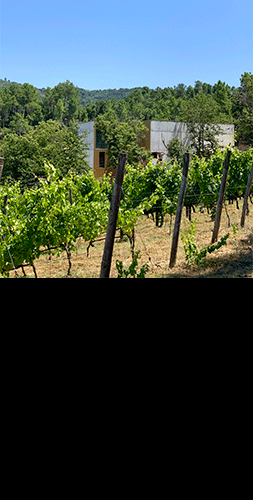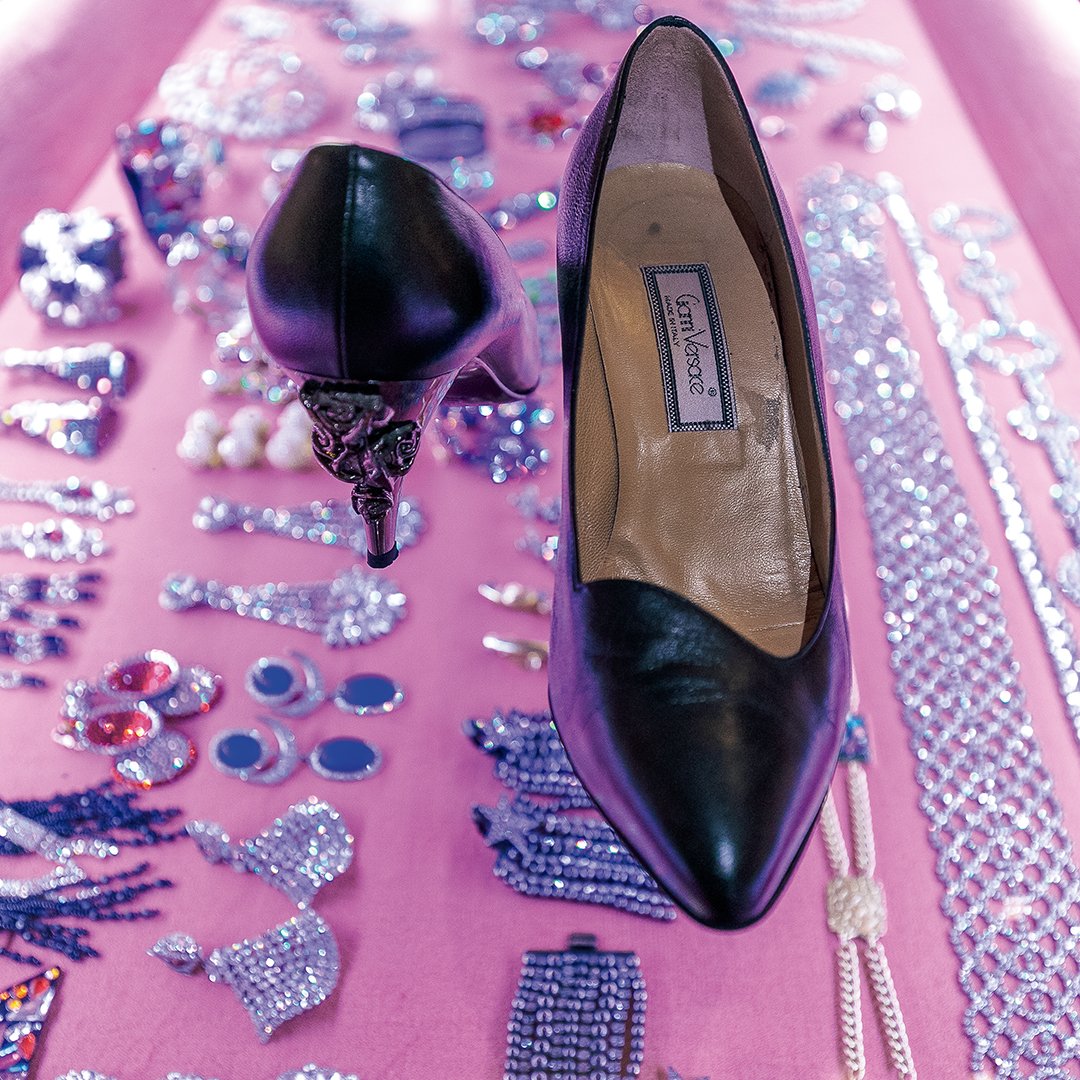
Amália Rodrigues was born in ‘the time of cherries’, at five o’clock sharp on July 23, 1920, or at least that’s how it was recorded, despite the fact that the artist celebrated on the first day of the month. Her maternal grandparents raised her in a ‘Portuguese-style house’ and she made her life in Lisbon. She was an ironer, embroiderer, worked in a factory and only later became a fado singer, although from an early age she made no secret of the potential of her voice. She sang the finest poets, not least because of her love of poetry, which she even wrote. She made the works of Ary dos Santos and Camões known to the world, without forgetting her presence in concert halls and on the big screen, thanks to her roles in films and theatre. Few would have imagined that a voice would emerge from old Lisbon and take the lament and longing of a people to five continents. All the loves and sorrows are still hers, because Amália earned eternity.
Standing in front of number 193, we are in Rua de São Bento, in the Portuguese capital. The yellow-painted house reveals its purpose from the curvy letters that spell out Casa-Museu Amália Rodrigues. The artist lived there for more than 40 years, in a typically Portuguese pre-pombaline house, which today belongs to the Amália Rodrigues Foundation, as a means of honouring the last wishes of the woman who wasn’t afraid to sing her heart out.
To get to the first floor, we climb the staircase that the Portuguese diva walked up until the end of her days. Her presence can be felt everywhere: in the Portuguese tiles, the crockery, the piano, the strings of the Portuguese guitar and the nostalgic scent that permeates the rooms. In the living room, religious pieces and objects of praise are in the majority, upon which words can be read, including, «Amália Rodrigues (...) sang (...) for the poor of Lisbon». The dining room is next door, where cherries adorn the wallpaper, a reminder of her arrival in the world. It was there that the fado singer received colleagues and friends, but also strangers, who knocked on her door to express their gratitude. For a moment, we decided to stay silent, as if imagining her laughter echoing off the walls.
The artist lived there for more than 40 years
Standing in front of number 193, we are in Rua de São Bento, in the Portuguese capital. The yellow-painted house reveals its purpose from the curvy letters that spell out Casa-Museu Amália Rodrigues. The artist lived there for more than 40 years, in a typically Portuguese pre-pombaline house, which today belongs to the Amália Rodrigues Foundation, as a means of honouring the last wishes of the woman who wasn’t afraid to sing her heart out.
To get to the first floor, we climb the staircase that the Portuguese diva walked up until the end of her days. Her presence can be felt everywhere: in the Portuguese tiles, the crockery, the piano, the strings of the Portuguese guitar and the nostalgic scent that permeates the rooms. In the living room, religious pieces and objects of praise are in the majority, upon which words can be read, including, «Amália Rodrigues (...) sang (...) for the poor of Lisbon». The dining room is next door, where cherries adorn the wallpaper, a reminder of her arrival in the world. It was there that the fado singer received colleagues and friends, but also strangers, who knocked on her door to express their gratitude. For a moment, we decided to stay silent, as if imagining her laughter echoing off the walls.
The artist lived there for more than 40 years















